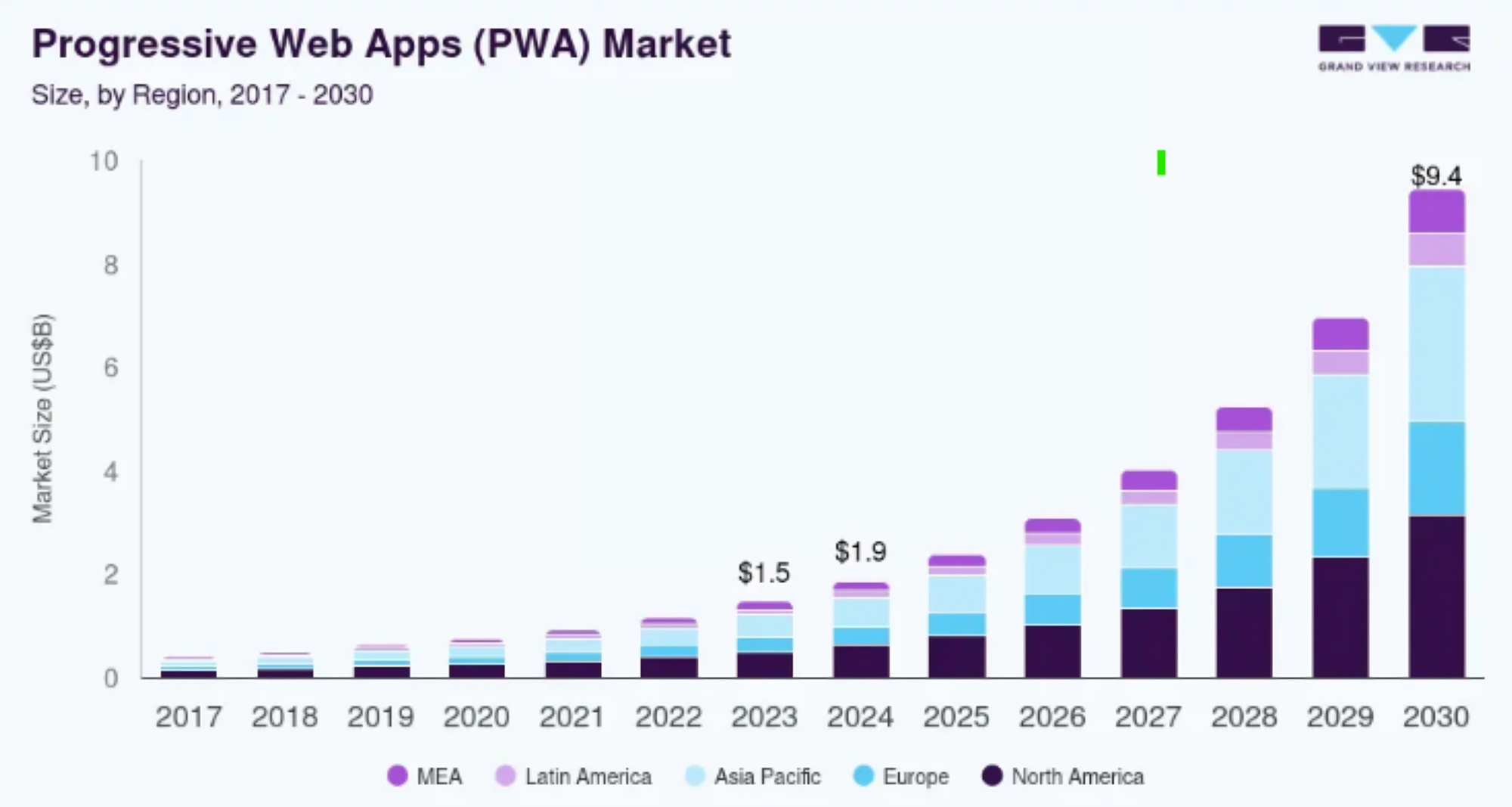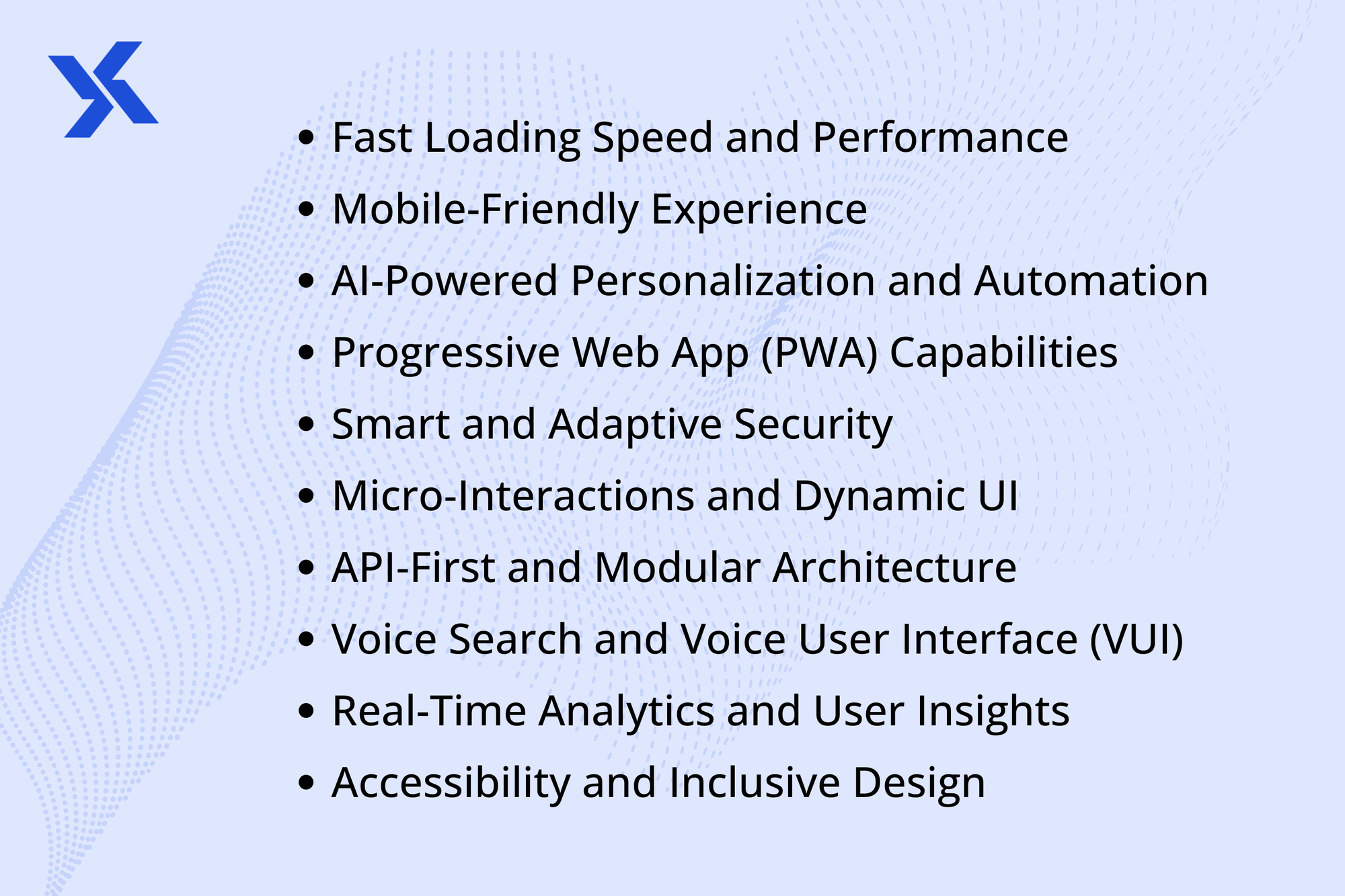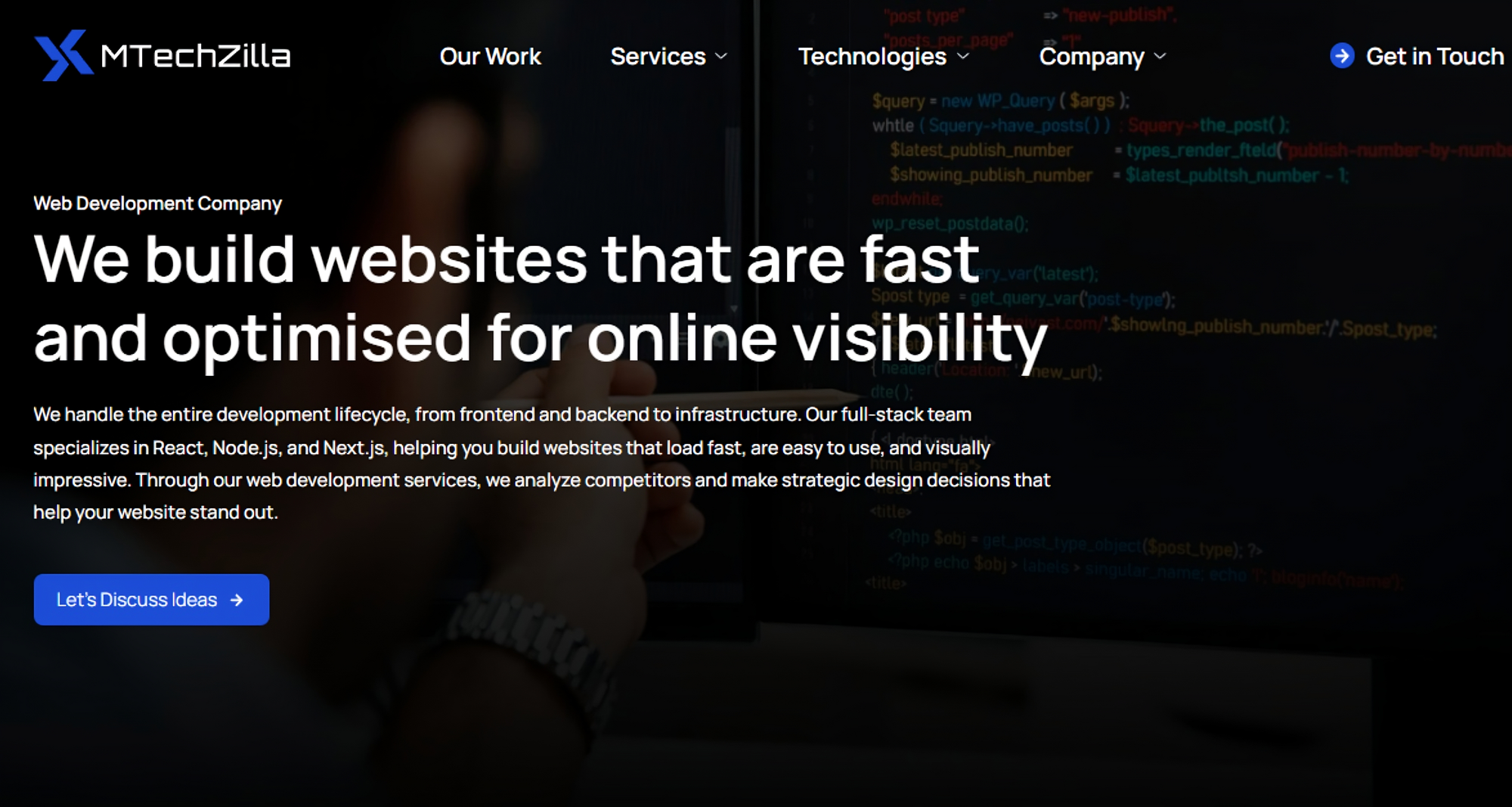August 4, 2025
11 min read

If we look at 2025, web applications have become essential for every business, whether it is a small local shop or a fast-growing enterprise. A web app today is not just an online presence. It is a key part of how businesses connect with customers, build trust, and manage their operations.
The market itself reflects this shift. We have gone through the market reports of Business Research Insights and Grand View Research. This growth is being driven by higher internet usage, the rapid rise of e-commerce, and the adoption of modern technologies such as PWAs and AI. Some of the key insights from these reports include:

Seeing the above reports, it is clear that the demand for smarter, faster, and user-friendly web applications is only going to increase. In this blog, we will explore the 10 must-have features that every modern web application should include to stay competitive in 2025 and beyond.
A web application is software that users can access through a web browser. Unlike traditional desktop applications that need to be installed, a web application runs online and delivers interactive features through the internet.
Chances are, you already use multiple web applications in your daily routine. Gmail, Google Docs, Netflix, LinkedIn, and Slack are all examples of web applications. They allow you to do far more than just view information. You can send emails, collaborate on documents, watch movies, or manage professional networks, all inside a browser.
For businesses, web applications are essential platforms for sales, customer engagement, and service delivery. Companies like Amazon, Airbnb, and PayPal rely on them to provide seamless experiences, process transactions, and build customer trust.
If you are running a business in 2025, a simple website is no longer enough. Gone are the days when having an online page with your company details could build trust.
Today, your customers expect more. They want speed, convenience, personalization, and the ability to interact with your business anytime, anywhere. A web application makes this possible with features like instant access, secure payments, personalized dashboards, and smooth navigation that fit the way people live and work online.
Here is why web applications matter for your business today:
So, investing in a web application is no longer optional. It is essential. Now, let’s move straight to the 10 essential features for every high-performance web application.
Choosing the right features for a web application is no longer guesswork. At MTechZilla, we often discuss these shifts within our development team. We run internal Q&A sessions, look at FAQs from clients, and even conduct quick polls on what features deliver the most value in real projects.
Based on this mix of research and hands-on experience, we have put together the 10 essential features that every high-performing web application needs in 2025.

You might have noticed this yourself. When a website or app takes too long to load, you quickly lose patience and move on. You lose potential customers if your app takes more than 3 seconds to load.
This matters for your business because it directly impacts user satisfaction and retention. It also plays a major role in search engine ranking, as Google favors faster applications. Most importantly, speed improves conversions and overall revenue, making performance one of the most critical features your web application must have.
What your developers should focus on:
A fast-loading web app shows professionalism, builds trust, and keeps your customers engaged with your business.
Here is the reality. Your customers are not only using desktops. Most of them are opening your application from their smartphones, and in 2025 mobile usage is at an all-time high. In fact, over 64 percent of web traffic now comes from mobile devices.
Think about how you use apps like Instagram, LinkedIn, or your bank’s mobile portal. You expect that same smooth experience anywhere you go, and your users expect it from your web application too.
To make sure your web application delivers this, your developers should include:
In today’s world, where browsing and shopping happens on the move, that’s exactly what gives your business an edge.
When you visit an app, you expect it to feel like it “knows” you. That’s exactly what AI-powered personalization does for your users.
In 2025, web applications can track preferences, behavior, and interactions to deliver experiences tailored to each individual. From smarter chatbots to personalized dashboards, AI makes your app feel more human and less mechanical.
What you should do and how to adopt it:
AI doesn’t have to feel complex or out of reach. Begin with small steps, like adding a chatbot or basic personalization, and then scale up as your app grows. That’s how you make AI a natural part of your user experience.
A Progressive Web App, or PWA, is a type of web application that works like a mobile app but runs directly in your browser. You don’t need to download it from an app store, yet it gives you features like offline access, push notifications, and an app-like interface.
You have probably used apps like Uber, Spotify, or Pinterest without even realizing they are Progressive Web Apps.
What you should do:
PWAs matter for your business because they load quickly, even on weak networks, and allow users to stay connected offline. With push notifications, you can bring people back to your app, while keeping development costs lower compared to building separate native apps.
You expect your web application to feel safe and trustworthy, especially in 2025, when cybersecurity threats are evolving faster than ever. Instead of adding security after deployment, it becomes part of your app’s design.
Today’s advanced threats, including AI-powered attacks, demand dynamic protections that adapt in real time.
What you should implement:
Adaptive security ensures your app stops threats in their tracks while keeping your customer experience smooth and uninterrupted.
You know that feeling when you click a button, and it gives a smooth animation or a little tick mark shows your action is complete? Those tiny details are called micro‑interactions. They may look small, but in 2025 they play a big role in making your web app easy, intuitive, and enjoyable to use.
What you should implement:
These little touches build trust and create a smoother experience. They make your web app feel alive, and that’s exactly what keeps users comfortable and connected with your business.
If you have ever struggled to connect your web app with mobile apps or third‑party tools, that’s usually because the app wasn’t built with an API‑first approach.
In 2025, this is no longer optional. An API‑first architecture means you design your backend around APIs from the very beginning, instead of treating them as an afterthought.
Why this matters:
What you should implement:
With this approach, you make your app “channel‑ready” from day one.
Think about how often you use Siri, Google Assistant, or Alexa. Now imagine your users trying to interact with your app the same way.
According to Grand View Research, the global voice user interface market was valued at USD 19.73 billion in 2022 and is set to grow at a CAGR of 21.3 percent through 2030, driven by AI and natural language processing advancements that make voice interactions more accurate and natural.
What you should implement:
Voice search and VUI are becoming mainstream in 2025 because people want speed and convenience. If your web app supports voice, you make it easier for users to find what they need hands‑free.
If you are building an app in 2025, guessing what users want is not enough. You need live data to see how people interact with your app and where they struggle.
Real-time analytics give you that visibility so you can fix issues quickly, test changes, and improve your app’s performance without waiting weeks for reports.
What you should do:
By doing this, you give your development team the power to make decisions based on facts, not assumptions. And when you act on data in real time, you keep your users happy and engaged.
The last but most important, which usually gets avoided, is that your app should work for everyone, not just a part of your audience.
Accessibility means making sure people with disabilities can use your app with ease, but it also improves the experience for all users. In 2025, inclusive design is not just compliance, it is a competitive advantage.
What you should do:
When you design with inclusivity in mind, you expand your audience, improve usability, and build a reputation as a brand that cares about its users. And that is something that both customers and search engines reward.
If you are planning to build or upgrade your web application in 2025, here’s how you can start:
If you want your app to be truly future‑ready, work with a professional web development agency that knows how to build scalable, modern applications. Having the right partner saves you from costly mistakes, speeds up delivery, and ensures your app is built with the latest technologies in mind.
You have now gone through the 10 must‑have features, and if you are building a web application in 2025, you are probably asking yourself one question: where should you focus first? The answer is simple. Start by making sure your app is fast, mobile‑friendly, and secure.
Once you have that foundation, add features like AI personalization, PWAs, and voice as your product grows. This way, you build something that scales with your business. Building such applications takes more than code. You need a team that understands what users want today and what technologies will matter tomorrow.

At MTechZilla, as a custom web development services provider, we help startups build applications that are reliable today and future‑ready. With our expertise in React, Next.js, Node.js, AI, and cloud, we make sure your web application scales with your business and meets the demands of modern users.
If you are planning your next web application or want to modernize the one you have, let’s connect.


Share your product idea and challenges

Discuss possible approaches and solutions

Define a roadmap for your project